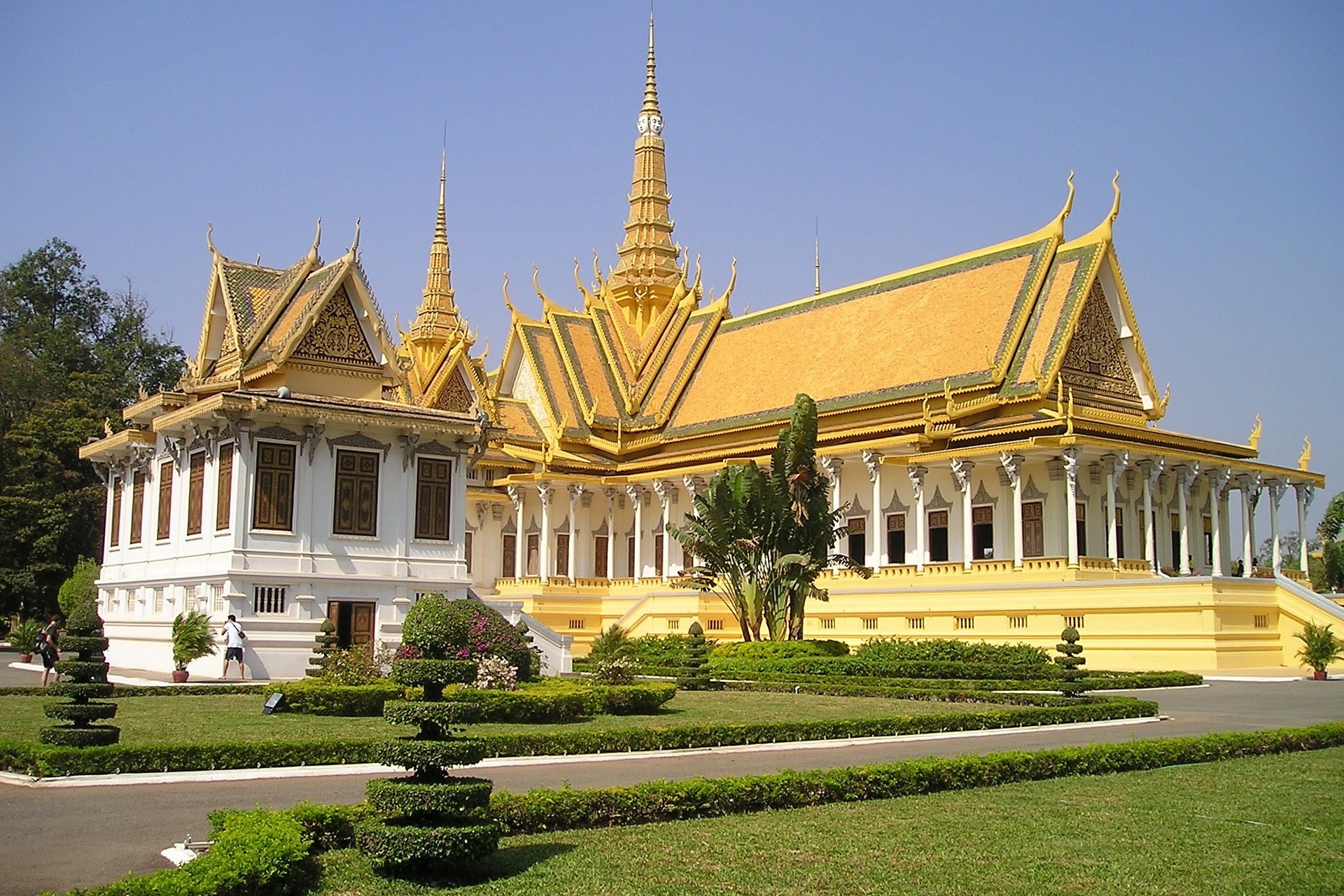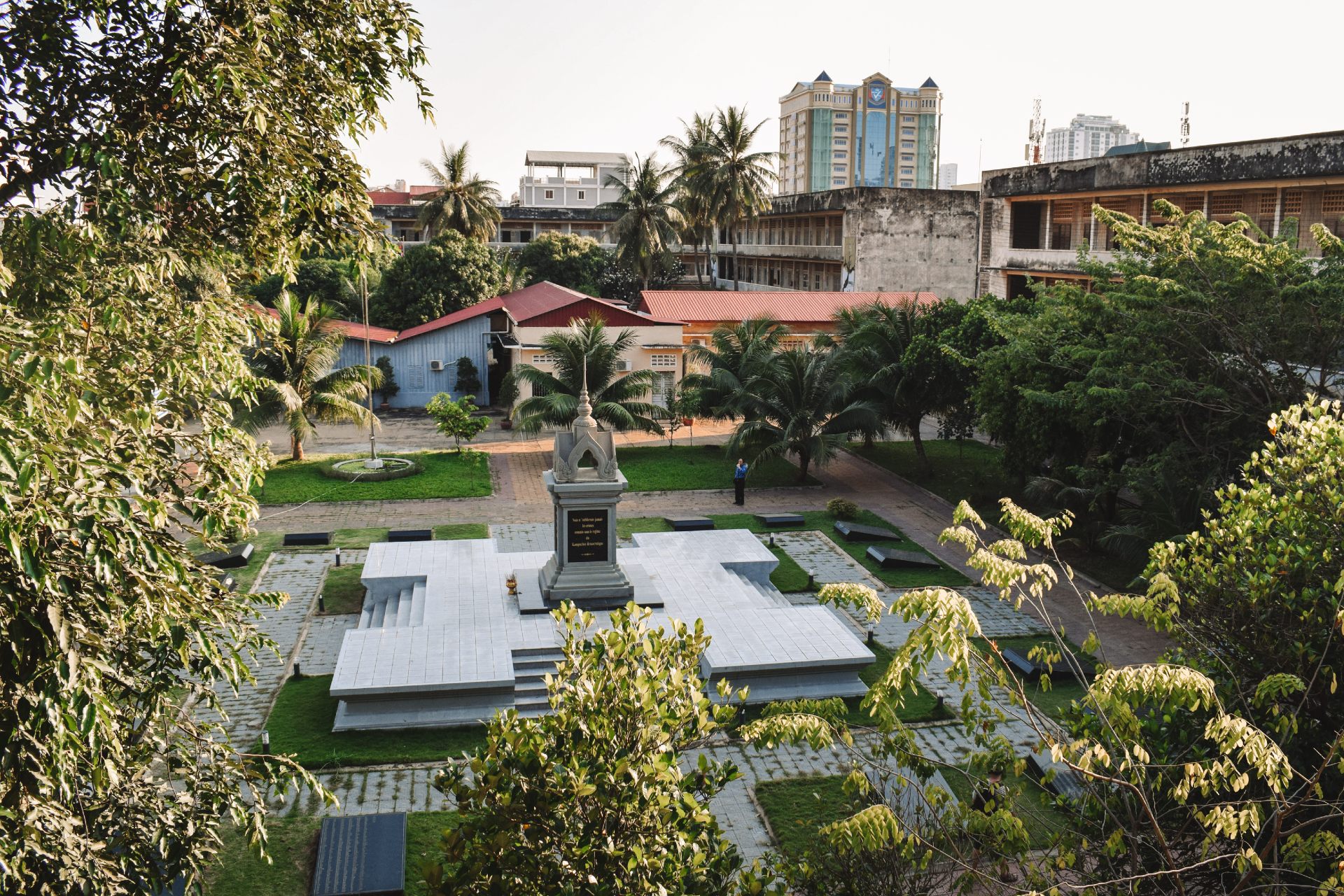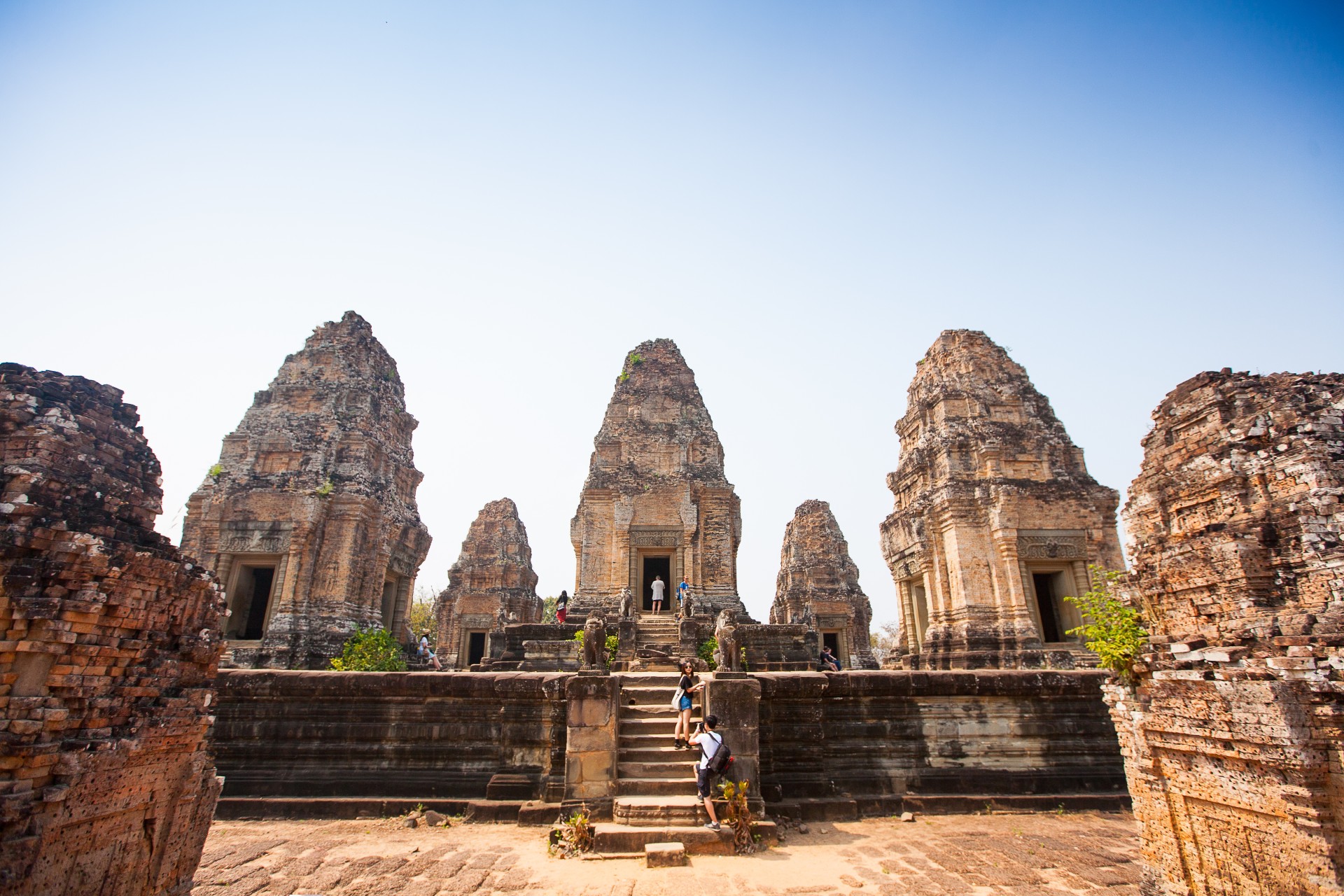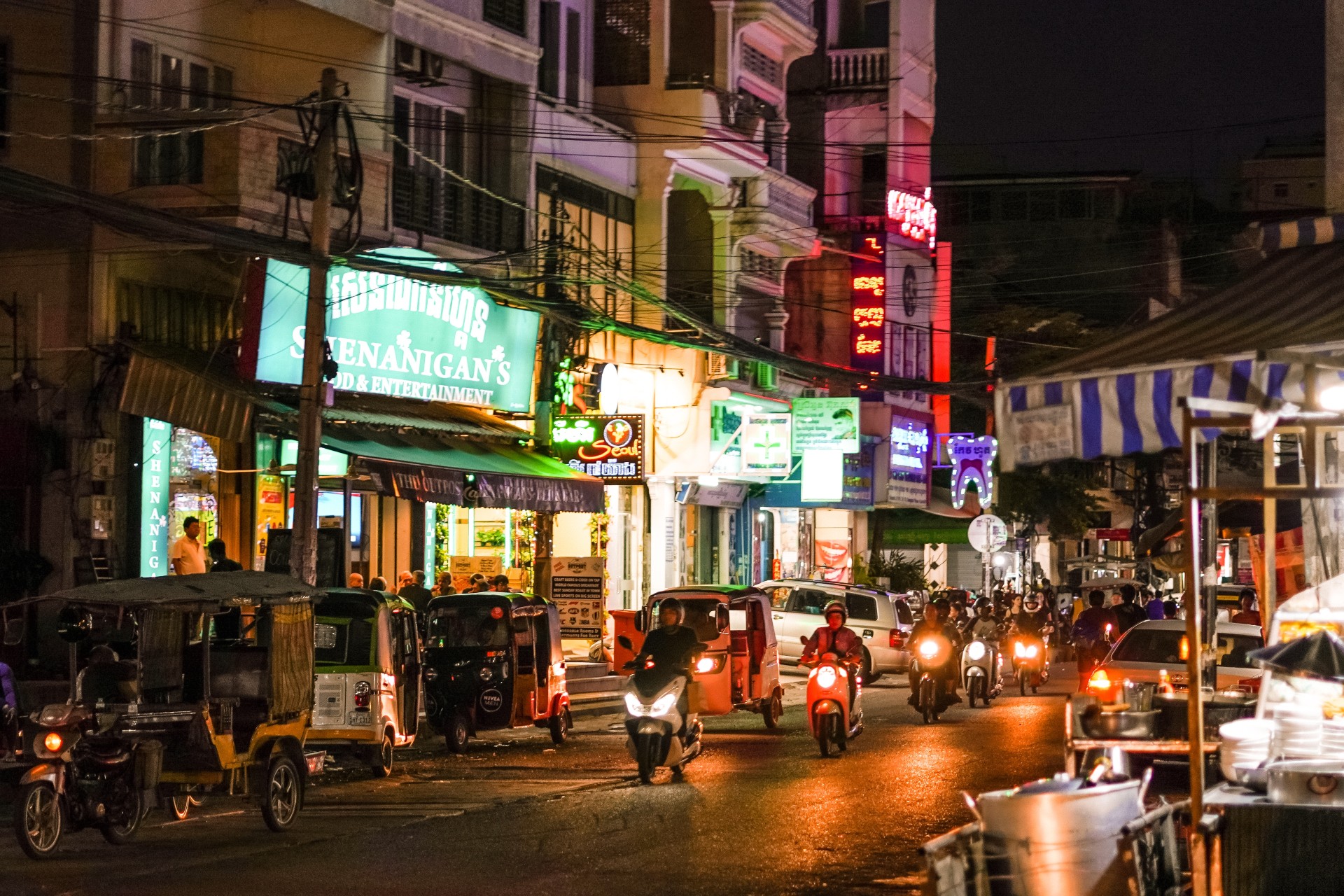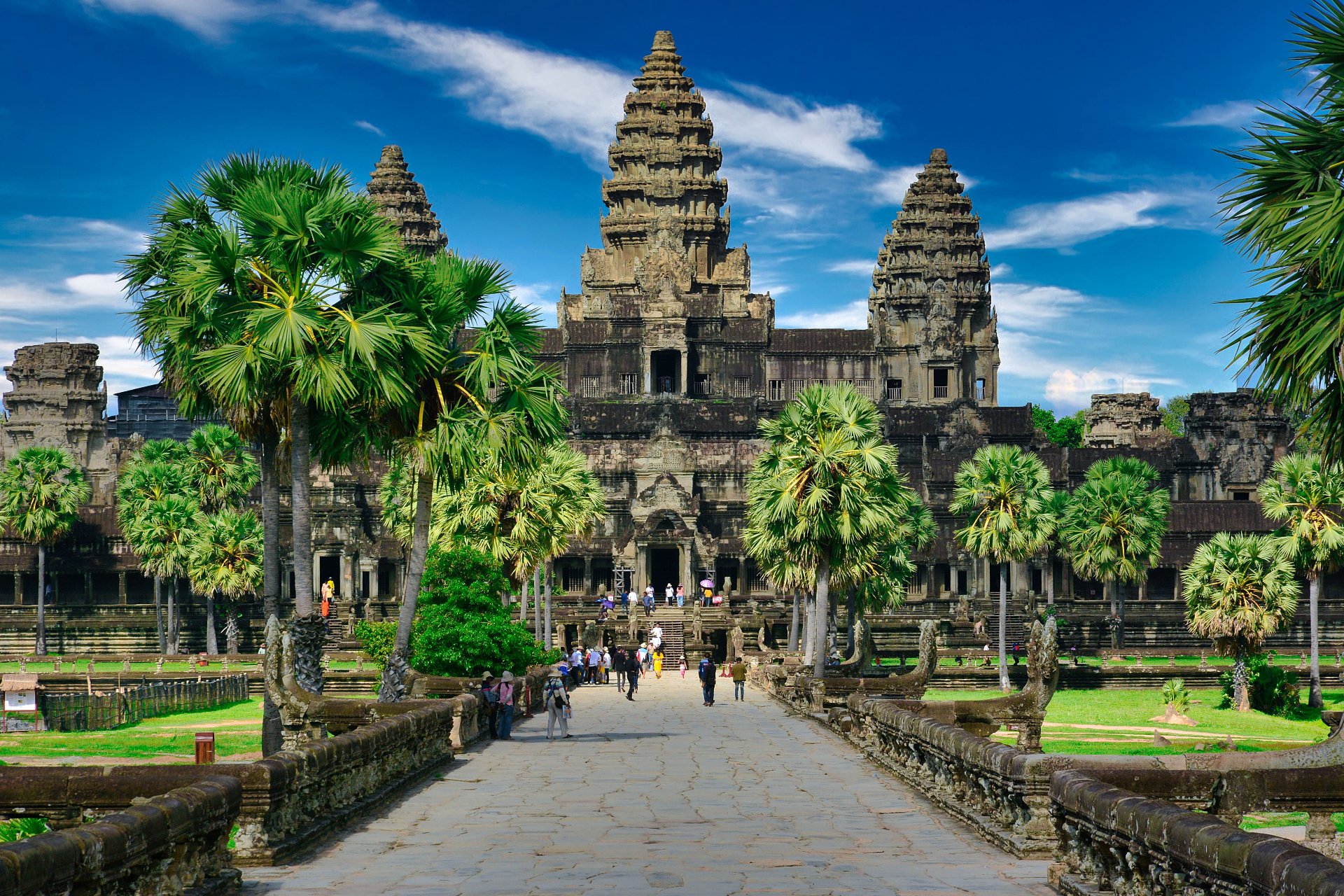Cambodia
- Capital City: Phnom Penh
- Language: English, Khmer
- Currency: Cambodian riel
- Best Time To Travel: November to May
- Country Dialing Code: +855
- Population: 16.95 million
About Cambodia
- Clothing: Tourists in Cambodia should avoid wearing revealing clothing. Cambodian’s dress in a conservative manner, travelers should aim to dress in a similar way to avoid causing offense. Jeans are not recommended due to the high temperatures and humidity. Cotton and linen pants are more suitable options.
- Cuisine: A typical Cambodian meal would normally consist of a soup, a salad, a main fish dish, vegetables and rice. A Cambodian dessert, normally based on fresh fruits and sticky rice, complement the meal. In the Khmer diet, rice and freshwater fish play big roles because of the abundance of both.
- Culture: Cambodia is best known for its massive temples, including Angkor Wat, as well as the brutal Khmer Rouge regime of the 1970s and civil war that followed. Cambodia's history includes some of the greatest artistic achievements and most horrifying acts.
The Royal Palace in Phnom Penh, a beautiful example of Cambodian royal architecture that occupies over 174,870 sqm of the city center, has since become an emblem of the country and a must-see for visitors with its elegant Khmer roofs, exquisite gilding, and lush gardens.
Home to the best collection of Khmer sculpture in the whole world, including works from more than a millennium ago. It is located in a lovely traditional-style terracotta building with a welcoming courtyard garden that was constructed between 1917 and 1920.
The so-called Security Prison 21 (S-21), which originally stood where the Tuol Sleng Genocide Museum now stands, was once there. Made up of four structures that were once a component of the former Tuol Svay Prey School before being used as a facility for interrogations, torture, and executions.
King Rajendravarman II erected the Shiva-dedicated mountain shrine known as the East Mebon during the middle of the tenth century. It was built on a man-made island that was 120 meters wide and located in the East Baray, a massive water reservoir that was only accessible by boat.
The little market, called in Cambodian as Psar Reatrey, is situated in the heart of the city next to Wat Phnom. The entrance is located on Sisowath Quay, which is a wonderful area for an evening promenade along the Tonle Sap river.
The biggest and best maintained of the Angkor series of monuments. One of the world's best monuments, it is flawless in its composition, balance, proportions, reliefs, and sculpture.




